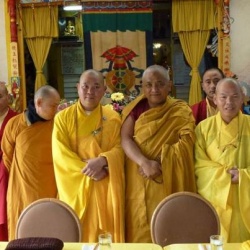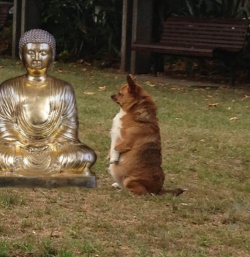Difference between revisions of "Kōya-san temple"
m (Text replacement - "lodgings" to "lodgings") |
|||
| Line 8: | Line 8: | ||
[[Kōya-san temple]] | [[Kōya-san temple]] | ||
| − | [[Temple]] | + | [[Temple]] lodgings, known as [[shukubo]], are popular accommodations among overseas visitors in [[Koyasan]]. |
In the {{Wiki|past}}, they were only for [[monks]] who engaged in [[ascetic practices]] in [[Koyasan]]. | In the {{Wiki|past}}, they were only for [[monks]] who engaged in [[ascetic practices]] in [[Koyasan]]. | ||
| − | Then, [[temples]] started to allow [[pilgrims]] to stay at [[temples]]. Now [[Japanese]] tourists can stay at [[temple]] | + | Then, [[temples]] started to allow [[pilgrims]] to stay at [[temples]]. Now [[Japanese]] tourists can stay at [[temple]] lodgings, as well foreign visitors. |
Currently, they provide visitors with equipments such as towels, toothbrush and yukata. | Currently, they provide visitors with equipments such as towels, toothbrush and yukata. | ||
Revision as of 09:43, 8 February 2016
Kōya-san temple
Temple lodgings, known as shukubo, are popular accommodations among overseas visitors in Koyasan.
In the past, they were only for monks who engaged in ascetic practices in Koyasan.
Then, temples started to allow pilgrims to stay at temples. Now Japanese tourists can stay at temple lodgings, as well foreign visitors.
Currently, they provide visitors with equipments such as towels, toothbrush and yukata.
As shukubo’s facilities are similar to Japanese Ryokan’s ones, you can learn about Japanese Ryokan manners, for example, how to check-in, where to take off your shoes, how to use communal baths and dining experiences in website of Japan National Tourism Organization (JNTO) in advance.
Please read the section of Japanese Inn Information below (http://www.jnto.go.jp/eng/indepth/history/experience/index.html#inn)
In 52 Koyasan shukubos, monks will work for you. Some monks are able to speak English, but some are not.
They will prepare for serving vegetarian cuisine, known as shojin-ryori, and drinks, and making Japanese futon thin mattresses that are spread on the tatami mats for your sleep.
Although you can enjoy those Koyasan-style services, you will need to follow temple rules.
Some temples still follow their own traditional style strictly; for example, some temples do not provide a TV in a room.

